
The Enchanting Colonial Charm of Antigua Guatemala
Discover the timeless beauty and rich cultural heritage of Antigua Guatemala, a UNESCO World Heritage site surrounded by volcanoes and filled with colonial charm.
Antigua Guatemala is a city that feels like a journey back in time. Nestled in the central highlands of Guatemala and surrounded by majestic volcanoes, this UNESCO World Heritage site is renowned for its well-preserved Spanish Baroque-influenced architecture. As you wander through its cobblestone streets, you'll discover a plethora of colorful buildings, each telling a story of the city's vibrant past. The city brims with cultural landmarks, including stunning churches, historic ruins, and bustling markets. The iconic Santa Catalina Arch is a must-see, as it frames the perfect view of the Agua Volcano. Don't miss the chance to explore the ruins of the Church of San Francisco and the impressive La Merced Church, known for its intricate facade. Antigua is also famous for its lively festivals, such as Semana Santa, when the streets come alive with processions and elaborate carpets made of colored sawdust. Beyond its historical allure, Antigua offers a rich culinary scene. From traditional Guatemalan dishes to international cuisine, the city's restaurants and cafes cater to all tastes. Be sure to try local specialties like pepian and tamales. For a unique experience, visit a coffee plantation to learn about the region's world-class coffee production. With its blend of history, culture, and natural beauty, Antigua Guatemala is a captivating destination that promises unforgettable memories.
Local tips in Antigua Guatemala
- Bring comfortable walking shoes; the cobblestone streets can be tough on feet.
- Visit early in the morning or late afternoon to avoid the crowds at popular sites.
- Learn some basic Spanish phrases; while many locals speak English, knowing Spanish will enhance your experience.
- Carry cash, as many local vendors and smaller establishments do not accept credit cards.
- Take a guided tour to gain deeper insights into the city's history and culture.
- Stay hydrated and apply sunscreen; the high altitude and sun can be intense.
The Enchanting Colonial Charm of Antigua Guatemala
Antigua Guatemala is a city that feels like a journey back in time. Nestled in the central highlands of Guatemala and surrounded by majestic volcanoes, this UNESCO World Heritage site is renowned for its well-preserved Spanish Baroque-influenced architecture. As you wander through its cobblestone streets, you'll discover a plethora of colorful buildings, each telling a story of the city's vibrant past. The city brims with cultural landmarks, including stunning churches, historic ruins, and bustling markets. The iconic Santa Catalina Arch is a must-see, as it frames the perfect view of the Agua Volcano. Don't miss the chance to explore the ruins of the Church of San Francisco and the impressive La Merced Church, known for its intricate facade. Antigua is also famous for its lively festivals, such as Semana Santa, when the streets come alive with processions and elaborate carpets made of colored sawdust. Beyond its historical allure, Antigua offers a rich culinary scene. From traditional Guatemalan dishes to international cuisine, the city's restaurants and cafes cater to all tastes. Be sure to try local specialties like pepian and tamales. For a unique experience, visit a coffee plantation to learn about the region's world-class coffee production. With its blend of history, culture, and natural beauty, Antigua Guatemala is a captivating destination that promises unforgettable memories.
When is the best time to go to Antigua Guatemala?
Iconic landmarks you can’t miss
Parque Central de Antigua Guatemala
Discover the vibrant heart of Antigua Guatemala at Parque Central, where lush gardens and colonial architecture meet the rich culture of Guatemala.
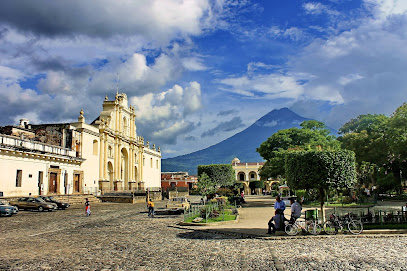
Arco de Santa Catalina
Explore the Arco de Santa Catalina, a historic arch in Antigua Guatemala that embodies colonial charm and offers stunning views and vibrant local culture.
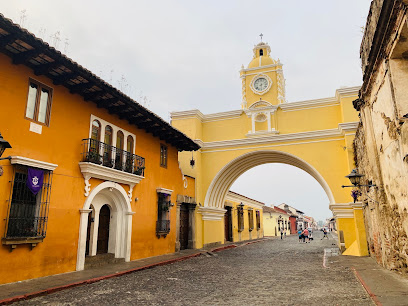
Cerro de La Cruz
Discover breathtaking views and the enchanting beauty of Antigua Guatemala at Cerro de La Cruz, a must-visit tourist attraction.
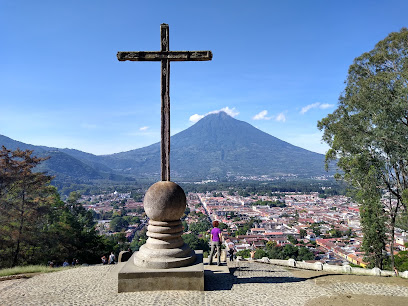
Hobbitenango
Experience the enchanting charm of Hobbitenango in Antigua Guatemala, where adventure meets whimsical hobbit-inspired architecture and stunning views.

Hotel Casa Santo Domingo
Experience luxury and history at Hotel Casa Santo Domingo, a five-star hotel and museum in Antigua, Guatemala, where every corner tells a story.

El Tenedor
Experience the breathtaking views and delightful flavors of El Tenedor, a premier restaurant in Antigua, Guatemala, blending local cuisine with stunning landscapes.
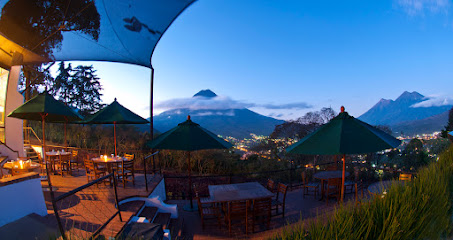
Iglesia de la Merced
Discover the architectural splendor and historical significance of Iglesia de la Merced in the heart of Antigua Guatemala.
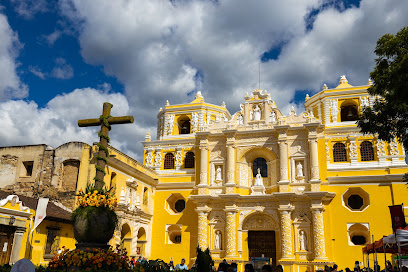
Rincón antigüeño
Experience the vibrant flavors of Guatemala at Rincón Antiguëño, a must-visit restaurant in Antigua renowned for its authentic local dishes.
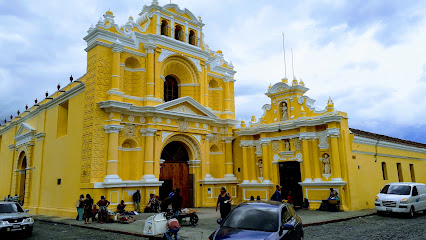
Convento Capuchinas
Explore the serene beauty and rich history of Convento Capuchinas, a captivating convent in the heart of Antigua Guatemala.
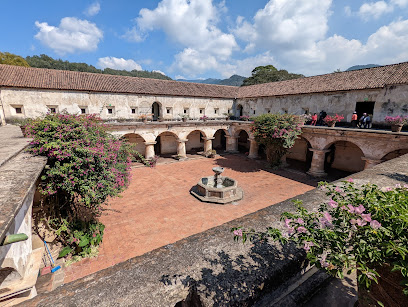
Tanque La Unión
Discover the charm of Tanque La Unión, a historical landmark in Antigua Guatemala, where colonial beauty meets serene park surroundings.
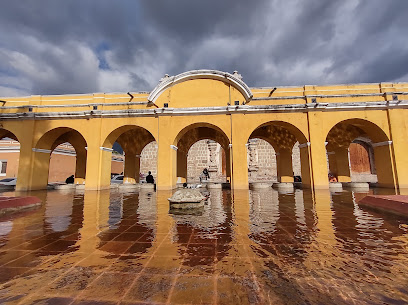
El Viejo Café
Experience the charm of El Viejo Café in Antigua Guatemala, where delicious cuisine meets a serene garden setting and a pet-friendly atmosphere.

Los Tres Tiempos
Discover authentic Guatemalan cuisine at Los Tres Tiempos, a culinary gem in Antigua offering traditional dishes and a vibrant atmosphere.
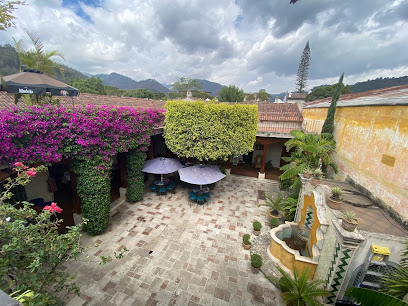
Casa Escobar Antigua
Discover Casa Escobar in Antigua, where exquisite steaks meet local flair in a charming setting, perfect for an unforgettable dining experience.
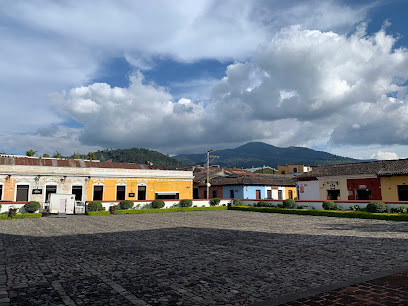
Antiguena Spanish Academy
Explore the beauty of Antigua while mastering Spanish at Antiguena Spanish Academy, a cultural hub for language learners.
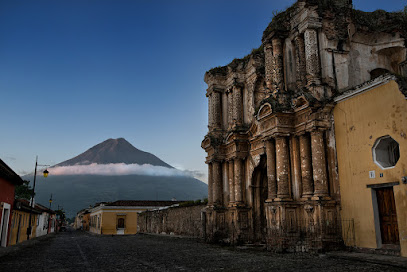
Iglesia Escuela de Cristo
Explore the stunning Iglesia Escuela de Cristo in Antigua Guatemala, where rich history, exquisite architecture, and spiritual ambiance blend beautifully.
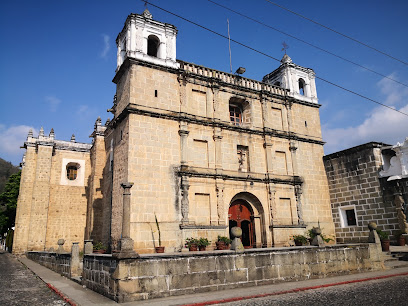
Unmissable attractions to see
Parque Central de Antigua Guatemala
Experience the vibrant heart of Antigua Guatemala at Parque Central, a cultural oasis surrounded by stunning colonial architecture and lush gardens.
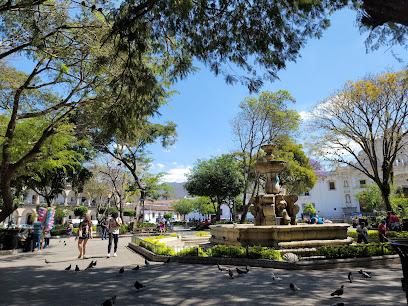
IRTRA Mundo Petapa
Experience the excitement of IRTRA Mundo Petapa, Guatemala's premier amusement park, filled with thrilling rides and family-friendly attractions.
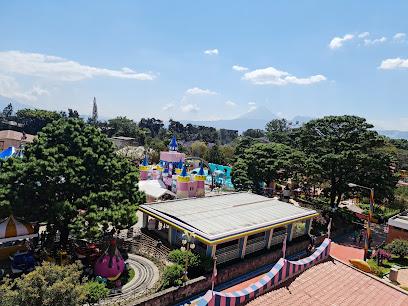
Plaza de la Constitución
Explore the vibrant Plaza de la Constitución in Guatemala City, a cultural hub surrounded by stunning architecture and lively local life.
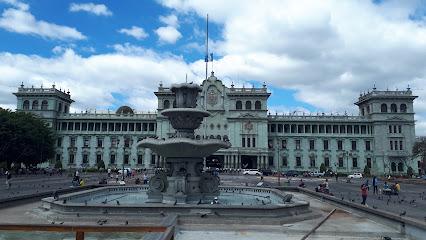
Arco de Santa Catalina
Discover the architectural beauty and historical significance of the Arco de Santa Catalina, a must-visit attraction in the heart of Antigua Guatemala.
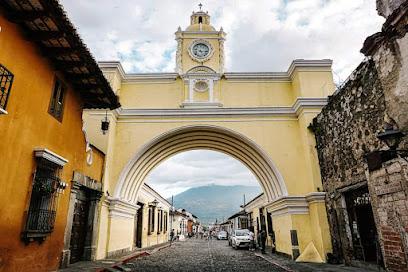
Centro Cultural Miguel Ángel Asturias
Discover the architectural beauty and vibrant cultural performances at Centro Cultural Miguel Ángel Asturias in the heart of Guatemala City.
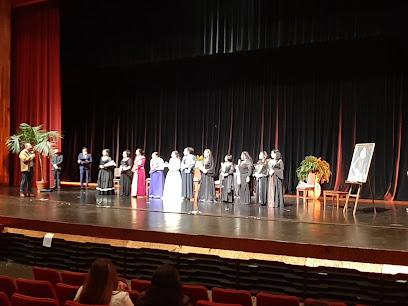
Iglesia de la Merced
Explore the stunning baroque architecture and rich history of Iglesia de la Merced, a must-visit landmark in Antigua Guatemala.
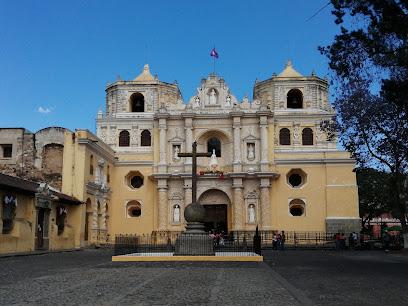
Plaza Berlín
Experience the serene beauty and cultural vibrancy at Plaza Berlín, a must-visit city park in the heart of Guatemala City.
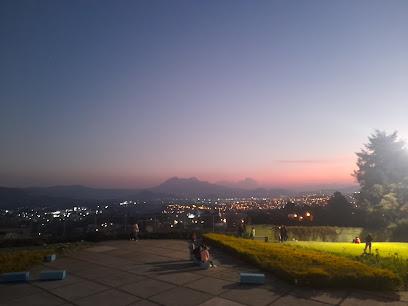
Palacio Nacional de la Cultura
Explore Guatemala's rich history and vibrant culture at the stunning Palacio Nacional de la Cultura, a must-see museum in the heart of Guatemala City.
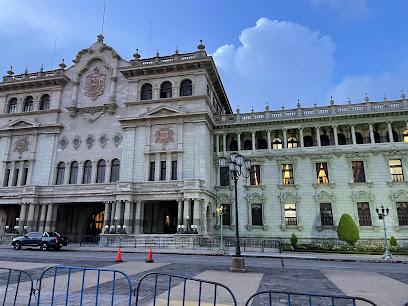
Torre del Reformador
Explore the stunning Torre del Reformador, an iconic monument in Guatemala City with breathtaking views and rich historical significance.

Sitio Arqueológico Iximche
Explore the ancient Maya ruins of Iximché in Tecpán, Guatemala, a serene archaeological park filled with history and natural beauty.
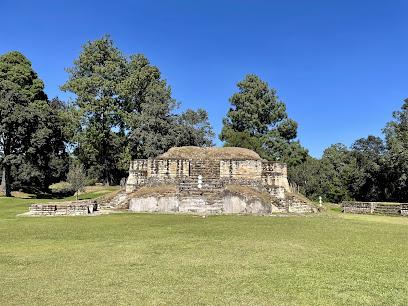
Convento Capuchinas
Explore the captivating Convento Capuchinas in Antigua Guatemala, a historical gem showcasing colonial architecture and serene gardens.
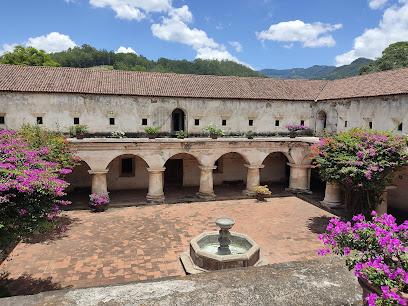
Tanque La Unión
Explore the historical beauty and serene ambiance of Tanque La Unión in Antigua Guatemala, a must-visit park for every traveler.
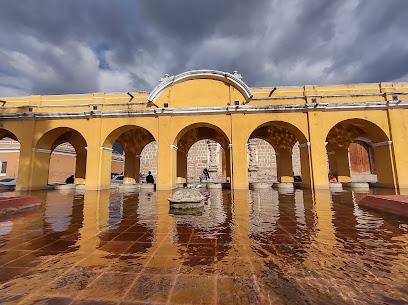
Archaeological Center kaminaljuyu
Explore Kaminaljuyu in Guatemala City, a captivating archaeological site revealing the ancient Maya civilization's rich heritage and history.
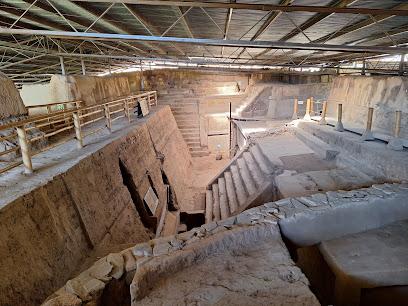
Hipódromo del Norte
Experience the thrill of horse racing and the beauty of nature at Hipódromo del Norte in Guatemala City, a perfect blend of excitement and relaxation.
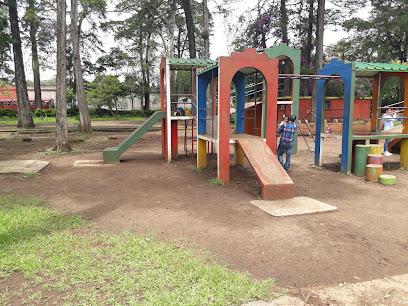
Plaza España
Explore the rich history and stunning beauty of Plaza España, a must-see monument and tourist attraction in Guatemala City, Guatemala.
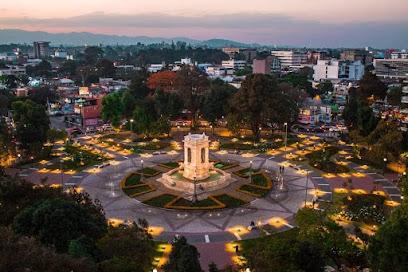
Essential places to dine
El Tenedor
Discover exquisite Guatemalan cuisine with stunning views at El Tenedor - your culinary oasis in Antigua.
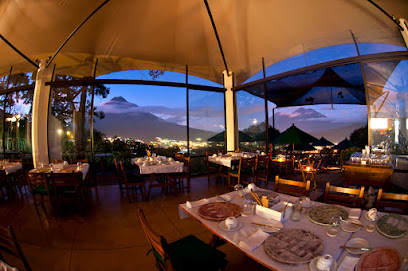
Luna de Miel
Experience the sweetest side of Antigua at Luna de Miel – where delightful desserts meet warm hospitality in a charming setting.
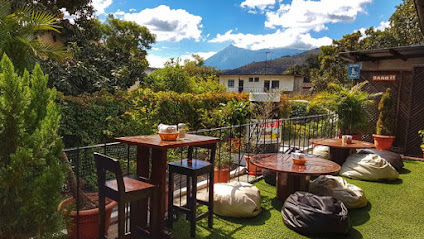
Monoloco Antigua
Experience authentic Guatemalan cuisine at Monoloco Antigua, where vibrant flavors meet lively atmosphere in the heart of Antigua.
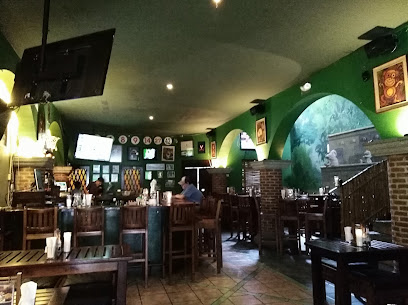
Ta'Cool Taco Shop
Discover the vibrant taste of Mexico at Ta'Cool Taco Shop in Antigua Guatemala – where every taco tells a delicious story.

Restaurante Fridas - La Antigua Guatemala
Experience authentic Guatemalan cuisine at Restaurante Fridas in Antigua Guatemala - where tradition meets flavor.
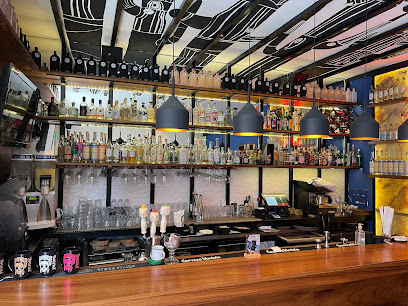
Los Tres Tiempos
Discover authentic Guatemalan cuisine at Los Tres Tiempos in Antigua - where tradition meets flavor in every dish.
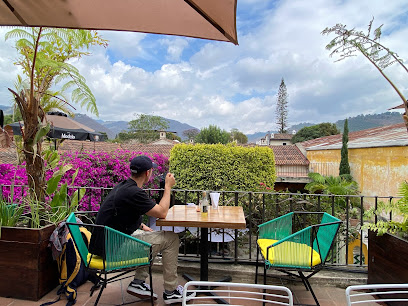
Casa Escobar Antigua
Experience exquisite steak dining at Casa Escobar Antigua, where local flavors meet gourmet excellence in a historic setting.
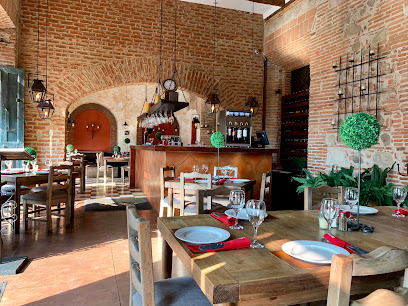
Puerta Once Antigua
Experience the vibrant flavors of Puerta Once Antigua - your destination for delicious chicken wings and gourmet hamburgers in historic Antigua Guatemala.
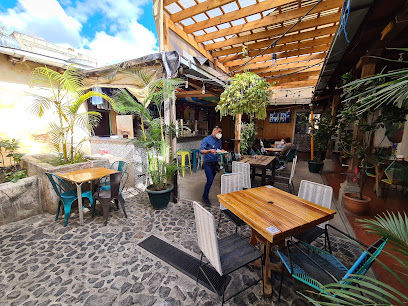
Angie Angie Cafearte
Experience authentic Argentinian cuisine in the heart of Antigua Guatemala at Angie Angie Cafearte, where every meal tells a story.
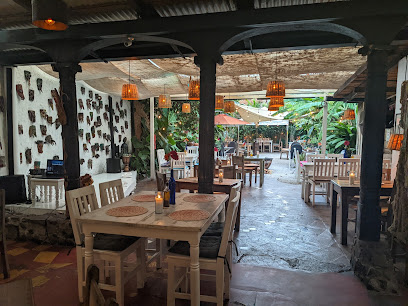
Hector's Bistro
Experience the rich flavors of Guatemala at Hector's Bistro - your go-to spot for diverse cuisine in Antigua.
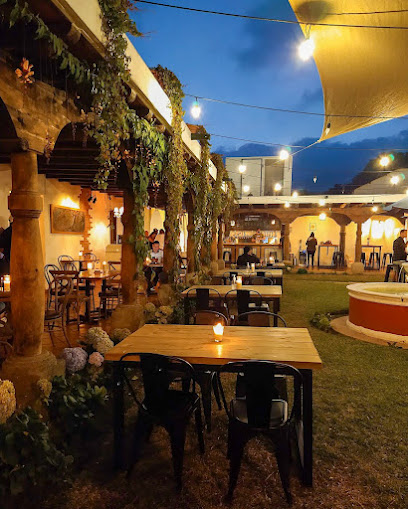
Lava Terrace
Discover the vibrant flavors of Guatemala at Lava Terrace in Antigua - where grilling meets tradition in a lively setting.
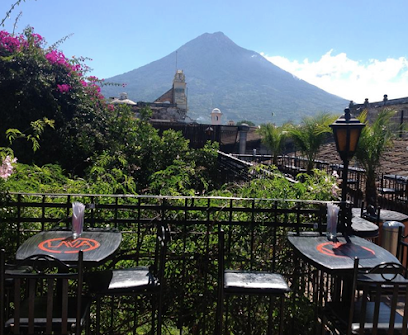
La Fonda de la Calle Real
Experience authentic Guatemalan cuisine at La Fonda de la Calle Real in Antigua - where tradition meets taste in every dish.
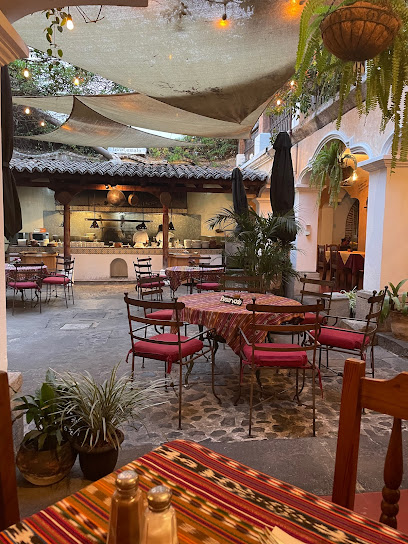
Cafe Sky Bar
Experience breathtaking views and delicious cuisine at Café Sky Bar in Antigua Guatemala - the perfect spot for food lovers and travelers alike.
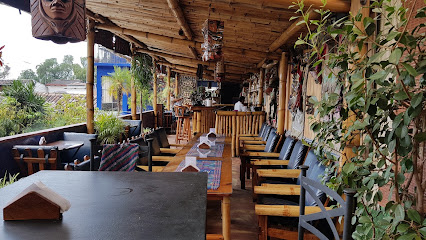
Las Palmas
Discover authentic Guatemalan flavors and vibrant nightlife at Las Palmas in Antigua Guatemala—where culture meets culinary delight.
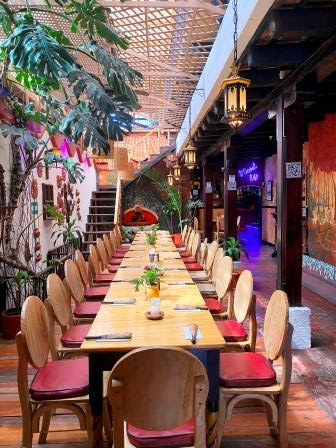
Restaurante 7 Caldos
Experience authentic Guatemalan cuisine at Restaurante 7 Caldos in Antigua Guatemala – where every dish tells a story.
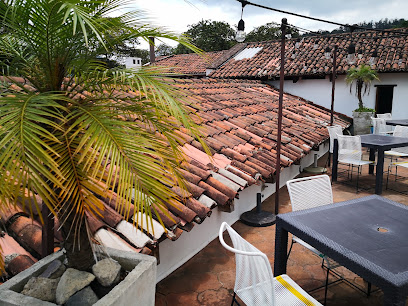
Markets, malls and hidden boutiques
Casa del Jade
Explore the rich heritage of jade craftsmanship at Casa del Jade in Antigua Guatemala, where culture and artistry converge in a stunning showcase.
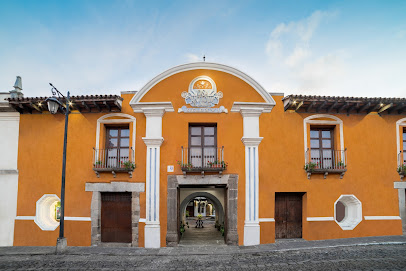
Nim Po’t
Explore Nim Po’t in Antigua, Guatemala - a treasure trove of unique souvenirs and authentic local crafts that embody the spirit of Guatemalan culture.
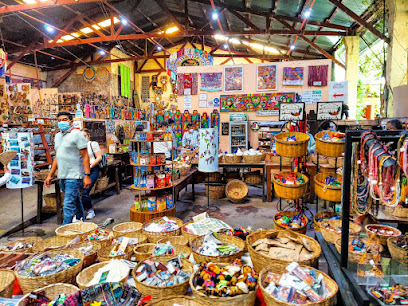
Xibalba Studio
Explore the essence of Guatemala through unique handmade crafts and art at Xibalba Studio, a charming boutique in Antigua Guatemala.

Casa de los Gigantes
Discover unique Guatemalan handicrafts and home goods at Casa de los Gigantes, a delightful gift shop in the heart of Antigua Guatemala.
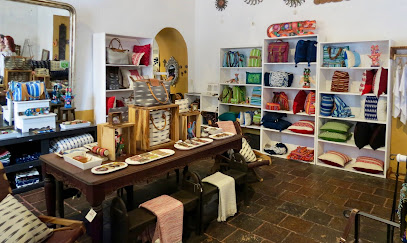
Casa de Artes
Discover the vibrant art and culture of Guatemala at Casa de Artes, a unique souvenir store and art center in the heart of Antigua.
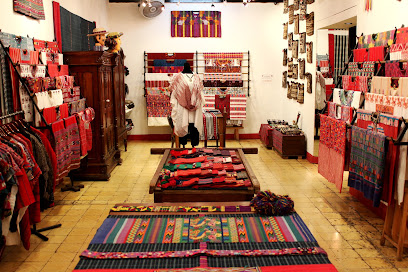
THE NORTH FACE
Explore the outdoors with premium gear from The North Face in Antigua Guatemala, your go-to store for adventure apparel and equipment.

Fragmentum Gallery
Explore the vibrant essence of Central American artistry at Fragmentum Gallery, a unique blend of art, fashion, and culture in Antigua Guatemala.
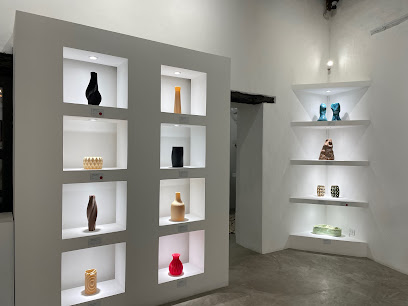
Wakami
Discover unique handcrafted fashion accessories at Wakami in Antigua Guatemala, supporting local artisans and embracing vibrant cultural heritage.
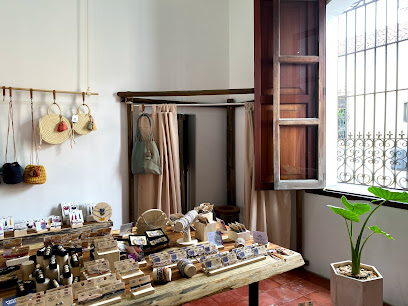
QUE ONDA VOS store
Explore QUE ONDA VOS in Antigua Guatemala for unique handmade home goods that celebrate local craftsmanship and vibrant culture.
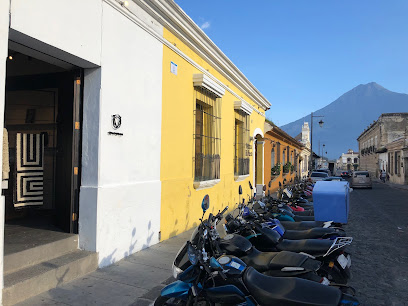
Plaza del Arco
Experience the heart of Antigua Guatemala at Plaza del Arco, a vibrant shopping mall filled with local crafts, delicious food, and a lively atmosphere.
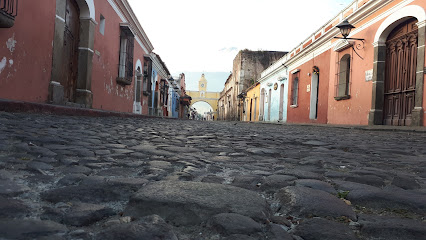
Xao Store
Explore the vibrant world of anime and collectibles at Xao Store in Antigua, Guatemala - a must-visit for enthusiasts and travelers alike.

Los Colores de la Tierra II
Explore the vibrant handcrafted jewelry of Los Colores de la Tierra II, where each piece tells a unique story in the heart of Antigua Guatemala.
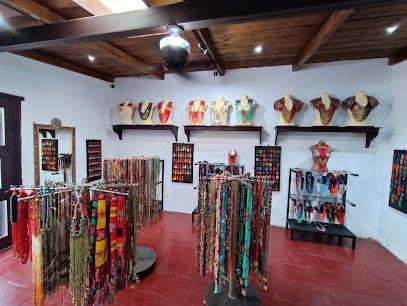
Joyeria Del Angel
Explore Joyeria Del Angel in Antigua Guatemala for exquisite handcrafted jewelry that captures the essence of Guatemalan culture and artistry.
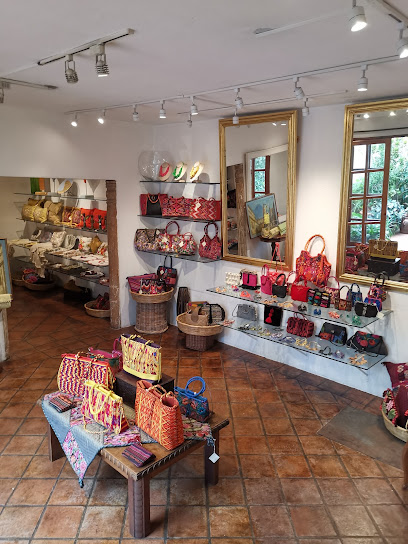
The Box
Discover unique footwear at The Box in Antigua Guatemala – where style meets comfort in every step.
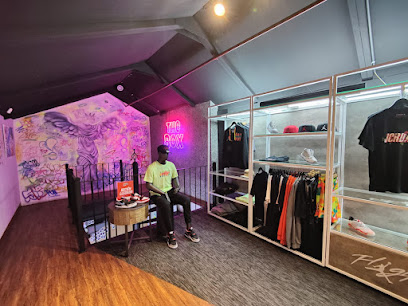
Duende
Explore Duende: A Unique Gift Shop in Antigua Guatemala Offering Local Artistry and Vibrant Balloons.
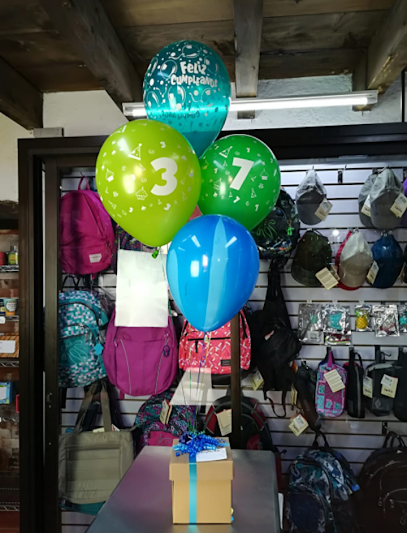
Essential bars & hidden hideouts
Reilly's Antigua
Discover Reilly's Antigua, a lively bar and restaurant blending local flavors with vibrant nightlife in the heart of Guatemala.
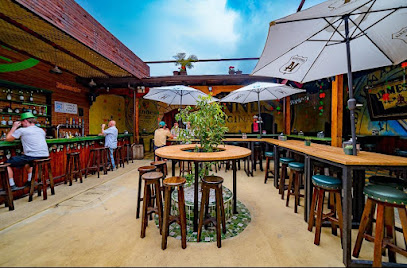
Lava Terrace
Experience the best grilled cuisine at Lava Terrace, a top dining destination in Antigua Guatemala, offering local flavors in a vibrant atmosphere.
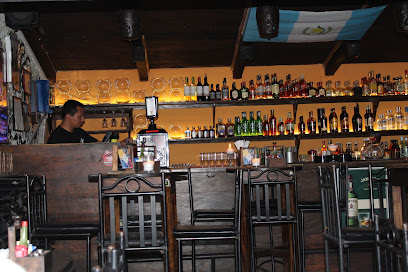
El Barrio
Discover the vibrant nightlife of Antigua Guatemala at El Barrio, a lively bar offering delicious cocktails and a welcoming atmosphere for all.
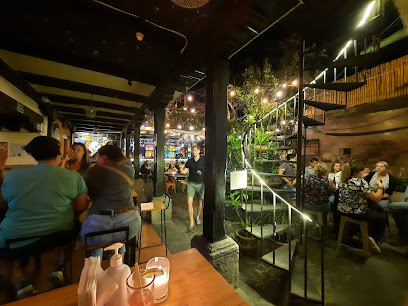
Cafe No Se
Experience the vibrant atmosphere and exquisite cocktails at Cafe No Se in Antigua Guatemala, a cultural hotspot for locals and travelers alike.

Aqua Antigua
Discover Aqua Antigua, a culinary gem offering exquisite dining, vibrant cocktails, and a refreshing poolside experience in the heart of Antigua, Guatemala.
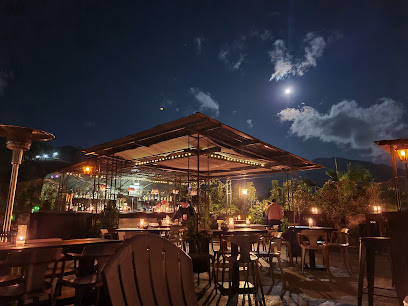
Red Zebra
Discover the vibrant flavors and lively atmosphere of Red Zebra, a must-visit bar and restaurant in the heart of Antigua Guatemala.
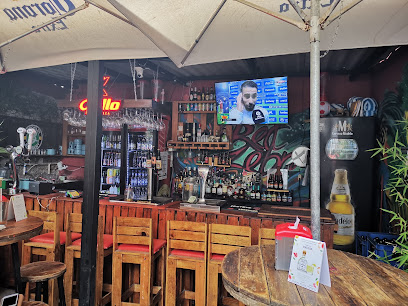
Doce Bar
Discover the vibrant nightlife of Antigua Guatemala at Doce Bar, offering delicious cocktails and an inviting atmosphere for all.
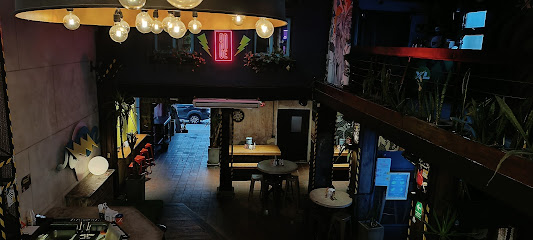
Ulew Cocktail Bar
Discover Ulew Cocktail Bar in Antigua Guatemala, where unique cocktails meet vibrant ambiance for an unforgettable night out.
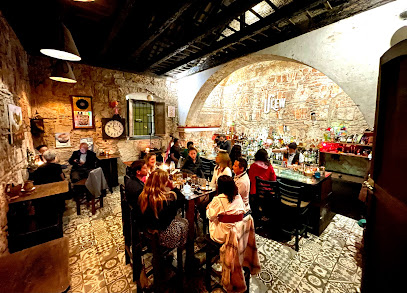
El Ilegal
Experience the vibrant nightlife of Antigua at El Ilegal, where delicious drinks and a lively atmosphere await every traveler.
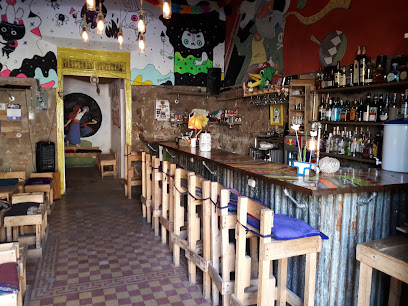
SNUG Antigua
Experience the vibrant atmosphere of SNUG Antigua, the premier Irish pub in the heart of Antigua Guatemala, where culture meets culinary delight.
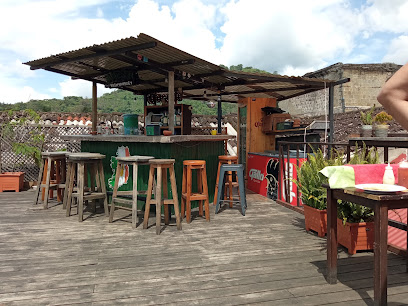
Bullseye Sports Pub
Discover the ultimate sports bar experience at Bullseye Sports Pub in Antigua Guatemala, where great food, drinks, and live sports create lasting memories.
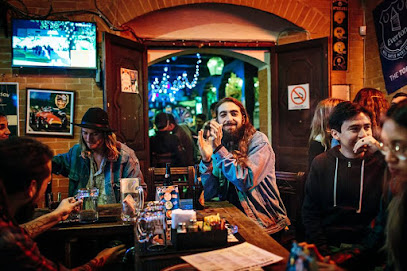
Vudu bar
Experience the vibrant nightlife of Antigua Guatemala at Vudu Bar, where creative cocktails and a lively atmosphere await.
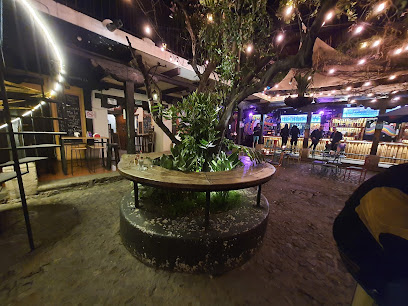
Charleston Antigua
Experience the vibrant atmosphere and unique cocktails at Charleston Antigua, the perfect bar in the heart of Antigua Guatemala.
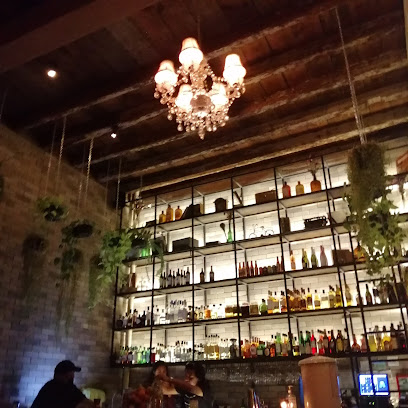
La Taverna
Experience the vibrant nightlife at La Taverna, Antigua's cozy bar offering exquisite cocktails and a charming patio atmosphere.

Exit Inn
Discover the taste of Antigua at Exit Inn, where local flavors meet international grill delights in a cozy setting.
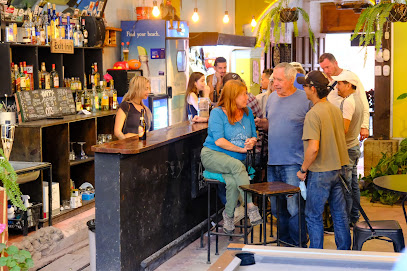
Local Phrases
-
- HelloHola
[oh-lah] - GoodbyeAdiós
[ah-dee-ohs] - YesSí
[see] - NoNo
[noh] - Please/You're welcomePor favor/De nada
[pohr fah-vohr/deh nah-dah] - Thank youGracias
[grah-see-ahs] - Excuse me/SorryDisculpe/Perdón
[dees-kool-peh/pehr-dohn] - How are you?¿Cómo estás?
[koh-moh ehs-tahs] - Fine. And you?Bien. ¿Y tú?
[byen. ee too] - Do you speak English?¿Hablas inglés?
[ah-blahs een-glehs] - I don't understandNo entiendo
[noh ehn-tee-ehn-doh]
- HelloHola
-
- I'd like to see the menu, pleaseMe gustaría ver el menú, por favor
[meh goos-tah-ree-ah behr ehl meh-noo, pohr fah-vohr] - I don't eat meatNo como carne
[noh koh-moh kahr-neh] - Cheers!¡Salud!
[sah-loohd] - I would like to pay, pleaseMe gustaría pagar, por favor
[meh goos-tah-ree-ah pah-gahr, pohr fah-vohr]
- I'd like to see the menu, pleaseMe gustaría ver el menú, por favor
-
- Help!¡Ayuda!
[ah-yoo-dah] - Go away!¡Vete!
[veh-teh] - Call the Police!¡Llame a la Policía!
[yah-meh ah lah poh-lee-see-ah] - Call a doctor!¡Llame a un doctor!
[yah-meh ah oon dohk-tohr] - I'm lostEstoy perdido
[ehs-toy pehr-dee-doh] - I'm illEstoy enfermo
[ehs-toy ehn-fehr-moh]
- Help!¡Ayuda!
-
- I'd like to buy...Me gustaría comprar...
[meh goos-tah-ree-ah kohm-prahr] - I'm just lookingSolo estoy mirando
[soh-loh ehs-toy mee-rahn-doh] - How much is it?¿Cuánto cuesta?
[kwan-toh kwehs-tah] - That's too expensiveEso es muy caro
[eh-soh ehs moo-ee kah-roh] - Can you lower the price?¿Puede rebajar el precio?
[pweh-deh reh-bah-hahr ehl pree-syoh]
- I'd like to buy...Me gustaría comprar...
-
- What time is it?¿Qué hora es?
[keh oh-rah ehs] - It's one o'clockEs la una
[ehs lah oo-nah] - Half past (10)Media (10)
[meh-dee-ah (dee-ehs)] - MorningMañana
[mah-nyah-nah] - AfternoonTarde
[tahr-deh] - EveningNoche
[noh-cheh] - YesterdayAyer
[ah-yehr] - TodayHoy
[oy] - TomorrowMañana
[mah-nyah-nah] - 1Uno
[oo-noh] - 2Dos
[dohs] - 3Tres
[trehs] - 4Cuatro
[kwah-troh] - 5Cinco
[seen-koh] - 6Seis
[says] - 7Siete
[syeh-teh] - 8Ocho
[oh-choh] - 9Nueve
[nweh-veh] - 10Diez
[dyehs]
- What time is it?¿Qué hora es?
-
- Where's a/the...?¿Dónde está el/la...?
[dohn-deh ehs-tah ehl/lah] - What's the address?¿Cuál es la dirección?
[kwahl ehs lah dee-rehk-syohn] - Can you show me (on the map)?¿Puede mostrarme (en el mapa)?
[pweh-deh mohs-trahr-meh (ehn ehl mah-pah)] - When's the next (bus)?¿Cuándo es el próximo (autobús)?
[kwan-doh ehs ehl proh-ksy-moh (ow-toh-booce)] - A ticket (to ....)Un boleto (a ....)
[oon boh-leh-toh (ah)]
- Where's a/the...?¿Dónde está el/la...?
History of Antigua Guatemala
-
Antigua Guatemala, originally named Santiago de los Caballeros, was founded on March 10, 1543, after the previous capital was destroyed by a volcanic eruption. The city was strategically positioned in the Panchoy Valley, surrounded by three impressive volcanoes: Agua, Fuego, and Acatenango. The intention was to create a prosperous colonial capital for the Spanish empire in Central America.
-
Throughout the 16th and 17th centuries, Antigua Guatemala flourished as a vibrant center of Spanish colonial power, culture, and religion. The city became known for its grand architecture, including splendid churches, monasteries, and public buildings designed in the Spanish Baroque style. Antigua’s Golden Age saw the construction of renowned structures such as the Cathedral of San José, the Church and Convent of Capuchins, and the Santa Clara Convent.
-
Antigua Guatemala's history is marked by several devastating earthquakes. Among the most significant were the 1717 and 1773 earthquakes. The 1717 earthquake caused extensive damage, but it was the 1773 Santa Marta earthquakes that led to the Spanish Crown's decision to relocate the capital to present-day Guatemala City. Despite this, many of the ruined structures were left intact, contributing to the city’s unique historical charm.
-
After the capital was moved to Guatemala City, Antigua Guatemala was largely abandoned and fell into a state of disrepair. However, the city's historical significance and architectural beauty were eventually recognized, leading to preservation efforts. In the 20th century, Antigua was declared a National Monument and later a UNESCO World Heritage Site in 1979, ensuring the protection and restoration of its colonial architecture and cultural heritage.
-
Today, Antigua Guatemala is a thriving cultural hub that attracts visitors from around the world. The city hosts numerous festivals, art exhibits, and cultural events, reflecting its rich history and vibrant heritage. Notable events include the elaborate Semana Santa (Holy Week) celebrations, which feature processions, alfombras (intricate sawdust carpets), and religious rituals, drawing thousands of tourists and locals alike.
-
Antigua Guatemala is renowned for its well-preserved colonial architecture and urban layout. The city's grid pattern, wide cobblestone streets, and central plaza are characteristic of Spanish colonial town planning. Key architectural highlights include the Arco de Santa Catalina, the ruins of the Church of La Merced, and numerous restored colonial homes and buildings that now house museums, restaurants, and hotels.
-
Antigua Guatemala has become a center for education and the arts. The city is home to several Spanish language schools that attract international students, contributing to its cosmopolitan atmosphere. Additionally, Antigua boasts numerous art galleries, cultural institutions, and craft markets, showcasing the works of local and international artists and artisans, and preserving traditional Guatemalan crafts and techniques.
Antigua Guatemala Essentials
-
Antigua Guatemala is located approximately 40 kilometers (25 miles) southwest of Guatemala City, the capital. The nearest international airport is La Aurora International Airport (GUA) in Guatemala City. From the airport, you can take a shuttle service, taxi, or private transfer to Antigua Guatemala. The journey typically takes about one to two hours depending on traffic. Several shuttle services operate daily between popular tourist destinations and Antigua.
-
Antigua Guatemala is a relatively small city, and most attractions are within walking distance. For longer distances, tuk-tuks and taxis are readily available and affordable. Buses and shuttle services are available for trips to nearby towns and tourist attractions. Renting a bicycle is another popular option for getting around the city. If you plan to explore rural areas, renting a car might be a convenient choice.
-
The official currency in Guatemala is the Guatemalan Quetzal (GTQ). Credit cards are accepted in many hotels, restaurants, and shops in Antigua, but it is advisable to carry cash for smaller establishments and markets. ATMs are widely available in the city, but be cautious of fees and withdrawal limits. It's recommended to inform your bank about your travel plans to avoid any issues with card transactions.
-
While Antigua Guatemala is generally considered safe for tourists, it is important to take standard precautions. Avoid walking alone at night in poorly lit areas and keep an eye on your belongings, especially in crowded places like markets. Some areas in Guatemala, including parts of Guatemala City, have higher crime rates targeting tourists, so it's advisable to stay informed and avoid these regions. Always use reputable transportation services and avoid displaying valuables in public.
-
In case of an emergency, dial 110 for police assistance or 122 for medical emergencies. Antigua has several medical facilities, including hospitals and clinics, that can provide care in case of illness or injury. Pharmacies are also available for over-the-counter medications. It is recommended to have travel insurance that covers medical emergencies and to carry a copy of your insurance policy. The local tourist police are also available to assist visitors.
-
Fashion: Do dress modestly, especially when visiting churches and religious sites. Avoid wearing revealing clothing. Religion: Do show respect for local customs and traditions. Always be quiet and respectful in churches and during religious ceremonies. Public Transport: Do be polite and give up your seat to elderly or disabled passengers. Don't eat or drink on public transport. Greetings: Do greet people with a handshake and a smile. A slight bow of the head is also a courteous gesture. Eating & Drinking: Do try local dishes and accept food and drink offerings graciously. Don't refuse hospitality, as it is considered impolite.
-
To experience Antigua Guatemala like a local, visit the bustling markets, such as the Mercado de Artesanías, where you can buy handmade crafts and fresh produce. Engage with locals and learn about their traditions and history. Attend local festivals and events to immerse yourself in the culture. Don’t miss the opportunity to take a guided coffee tour to learn about coffee production, which is a significant part of the local economy. Explore the less touristy areas, such as the villages surrounding Antigua, to see a more authentic side of Guatemalan life.
Trending Landmark in Antigua Guatemala
-
Parque Central de Antigua Guatemala
-
Arco de Santa Catalina
-
Cerro de La Cruz
-
Hobbitenango
-
Hotel Casa Santo Domingo
-
El Tenedor
-
Iglesia de la Merced
-
Rincón antigüeño
-
Convento Capuchinas
-
Tanque La Unión
-
El Viejo Café
-
Los Tres Tiempos
-
Casa Escobar Antigua
-
Antiguena Spanish Academy
-
Iglesia Escuela de Cristo
Nearby Cities to Antigua Guatemala
-
Things To Do in Guatemala City
-
Things To Do in Panajachel
-
Things To Do in Lake Atitlán
-
Things To Do in Chichicastenango
-
Things To Do in Quetzaltenango
-
Things To Do in Chalchuapa
-
Things To Do in Santa Ana
-
Things To Do in Copán Ruinas
-
Things To Do in San Salvador
-
Things To Do in La Libertad
-
Things To Do in Suchitoto
-
Things To Do in Santa Rosa de Copán
-
Things To Do in Gracias
-
Things To Do in Rio Dulce
-
Things To Do in Livingston













